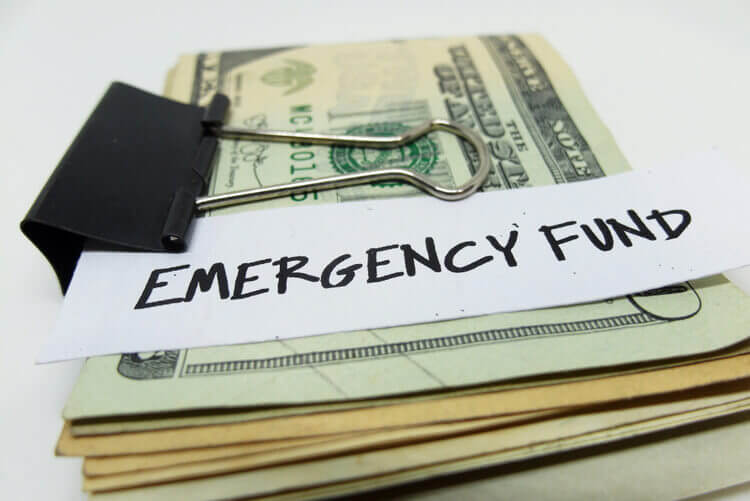
How to Build an Emergency Fund
It’s an ugly truth that when an emergency hits the first thing that jumps to mind is often the financial fallout it will cost. And while ugly, it’s understandable why: for those of us in lower-income brackets money is often already tight, and a financial fallout will have us face the choice of either skipping out on bills or taking out a title loan.
Studies show that the vast majority of Americans only have around $400 in savings: any emergency above that amount will inevitably cause them to go into debt. There’s a variety of reasons for this: the student debt crisis, the decimation of the middle class, the decrease of wages despite an increase in productivity of the last twenty years, but none of them are a fix. Do you know what is a fix?
An emergency fund.
The idea behind an emergency fund is simple. It’s a dedicated bank account that you allocate a little money to each month so that when an emergency strikes you’ll have that money to deal with it without having to put the money on credit cards or take out title loans.
Budget How Much You’ll Need
The first step to a successful emergency fund is to plan. This makes sense as, after all, an emergency fund is all about planning ahead and anticipating future challenges. The steps you’ll need to take are:
- Budget. You’ll need an accurate picture of what your monthly finances are before you can start planning ahead, and the best way to achieve that is to draw up a budget. In this case, that means dredging up your bank accounts and looking at your paychecks to be sure of how much you bring in after taxes each month. After that, you’ll need to aggregate your expenses month over month so you have a clear idea of how much you’re spending. When you subtract that second number from the first you get your discretionary spending money.
- Estimate costs. Now that you know precisely how much extra money you’re working with, the next step is to know how much you need in your emergency fund. While it’s impossible to know precisely, you can estimate fairly accurately by simply assessing the things you own, and how much it’ll cost to fix them when they break. For example, if your car is old you can estimate how much overhauling the engine will cost. Or for another example, you can easily estimate how high the emergency room bill for a car accident would. Doing this with all the possible emergencies out there will get you an idea of how large your emergency fund needs to be.
- Decide how much to contribute. Now that you know how much you need total, you should divide that number by twelve, and that’s how much you need to contribute to your emergency fund each month. It may not be easy, but it’s necessary if you’re going to be able to handle whatever emergencies life throws at you without taking out title loans near me.

How To Grow Your Emergency Fund
Some of you hypothetical readers are no doubt rolling your eyes right now: it’s all well and good to save, but when you’re barely able to keep your head above water on a weekly basis, where’s this money for an emergency fund supposed to come? And the answer is there are a few options:
- Cut luxuries. The easiest way to do this is to cut out luxuries like eating out, vacations, or even smoking. All three can be hugely expensive, and cutting them out will free up money that can go towards your emergency fund. You don’t have to give them up forever either; just until your emergency fund is filled up.
- Cut small costs. While it’s counterintuitive, often cutting small costs can get you the money you need to meet your quota. The reason for this is because small, repetitive costs can add up over time into big ones. The best example to illustrate this is coffee. If you get coffee from your local Starbucks or coffee shop before work each it may seem harmless, but those $3 a day over a week add up to $15, over a month to $60, and over a year to $720. All of which could’ve gone to fattening your emergency fund.
- Earn on the side. The flip side of saving money is making more that you can dedicate to your emergency fund. Since you’re no doubt already working a first job, the best way to generate a little extra is either with a second part-time job or a side income. Often gig or freelance work can earn you the few extra bucks you need each month, and in the digital age, it’s easier than ever to find work on sites like Fiverr or Upwork.
Remember: If Your Emergency Fund Fails, Title Loans Can Help
Even with all of your careful planning and budgeting, emergency funds can be difficult to build, and when the need for extra money arises, you might feel like you don't have many options available to you out of a sticky situation. The good news is that this isn't true. There are options, such as title loans, which can be obtained on the same day that you identify the need for extra money. They're fast, convenient, and easy to obtain. For more information or if you're ready to apply, please visit our Homepage where you can start your application and receive extra money today.
Note: The content provided in this article is only for informational purposes, and you should contact your financial advisor about your specific financial situation.
